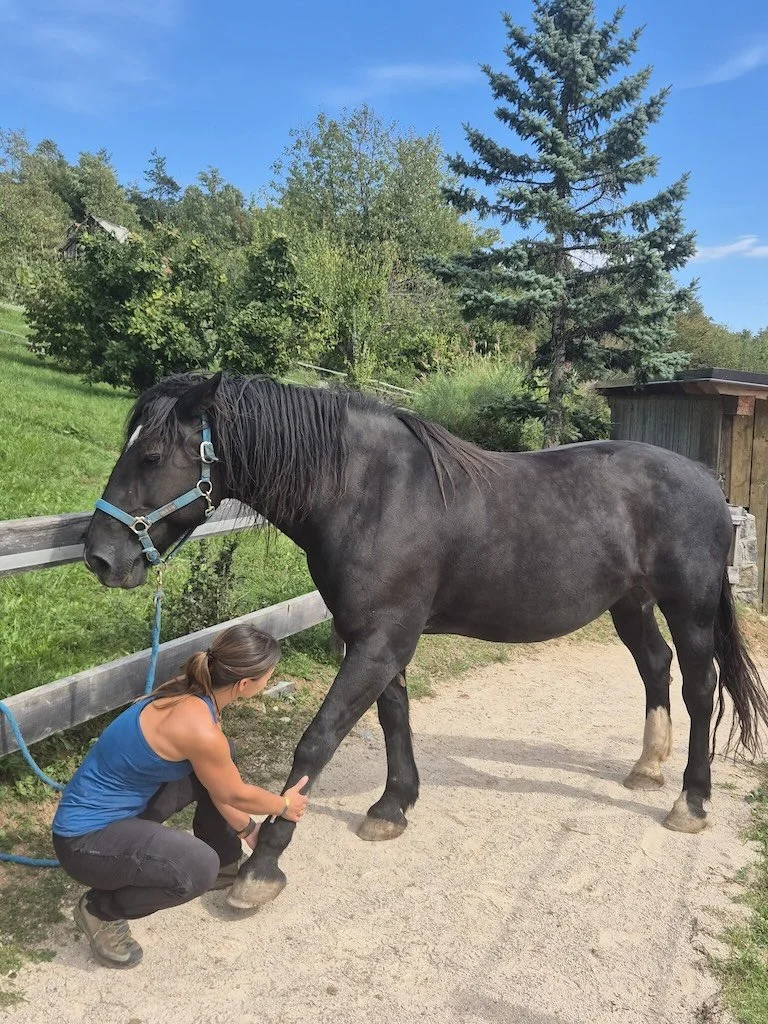Elbow pain – more common than you might think
Elbow pain is very common in horses who struggle to use their front end correctly. It is a problem many riders are unaware of, so it's important to educate ourselves on signs of elbow pain.
If your horse is not able to relax his leg forward and downward, so you see the elbow drop, this should be investigated further.
Something that I haven't been able to get out of my mind for a few years now is a bit of elbow trivia I learned from Sharon May-Davis and her extensive research. In one of her studies, she and her team dissected 46 horses (34 worked, 12 non-worked) and found that 100% of the worked horses had lesions in their elbows. 100%. All. Of. Them. Every horse that was worked, regardless of discipline, breed and age, had lesions in the elbow. This is crazy! Without getting into the discussion of what we're doing wrong and how we can change that, it's fair to say that the elbow joint is very susceptible to damage from riding.
With this in mind, it makes sense to pay more attention to that area when it comes to preventative measures. In last week's post I talked about how important (and also overlooked) the girth line region is. This region is directly connected to the elbow joint. I see so many horses who are tight through their girth line, and have their elbows almost glued to their ribcage. This causes the entire leg to externally rotate causing all sorts of issues further down (hoof imbalance being one of the big ones). On the other hand, we also see a lot of horses who keep their elbows further out, away from their bodies, taking weight off them. Both of these situations spell trouble for the elbow, and yet they are most often overlooked by horse owners and riders.
So, what is there to do? Well, if you're a bodyworker or therapist, make sure you pay attention to this area when working on a horse. This is especially crucial with horses who've had issues with saddle fit, horses who are struggling with hoof imbalances and horses who have a weak thoracic sling. If you're an owner or rider, learn how to identify issues in this region. Here are some of the things to keep an eye out for. Check for any signs of girthyness or sensitivity in this area. Palpate the region, including the inside of the elbow. Can you slide a hand between the ribcage and the olecranon? If not or if your horse objects to it, there might be an issue there. Can your horse stretch his leg forward with ease? If he has a hard time relaxing the leg down and forward, there might be an issue there (this is an indication of many things, elbow pain is one of them). Observe the horse as he is walking down a hill. Is he having a hard time with it? Downhill can be difficult for some horses with elbow pain. These are just some observations that you can make, but they can tell you a lot. If you suspect your horse has elbow pain, consult your veterinarian and your bodyworker.
